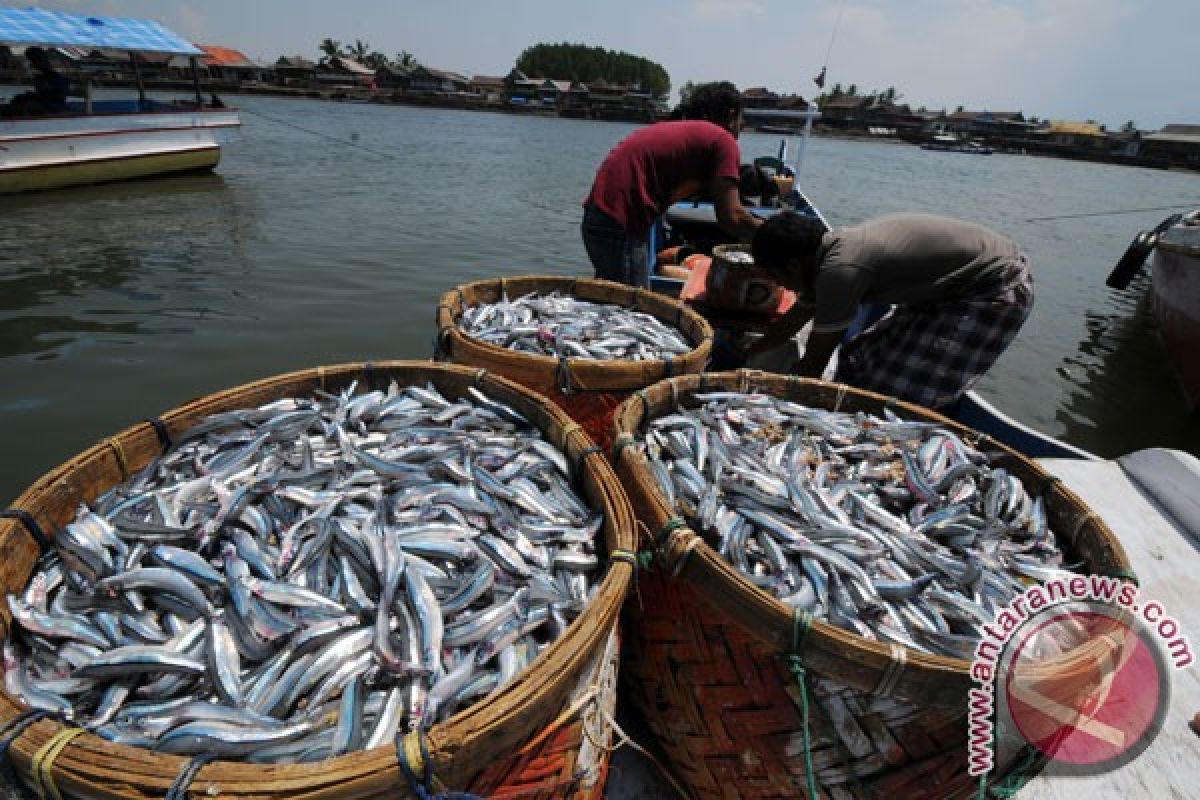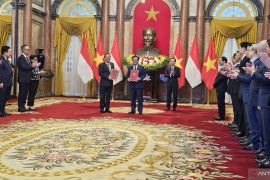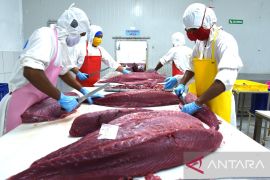"Most of the investment is expected to be made in fish culturing activities."Jakarta (ANTARA News) - Indonesia`s maritime and fishery potentials are not yet fully exploited as investors so far are still lacking attention to these sectors which actually offer profitable resources.
The Ministry of Maritime and Fisheries Affairs (KKP) has set an investment target of Rp23.67 trillion in the maritime and fishery sectors this year, yet this amount is viewed as very small if compared with the richness of fisheries resources.
If investment in other sectors is taken into account, the Rp23.67 trillion is relatively small, accounting for only 0.4 percent of the total investment made in the primary sectors.
The same is true to foreign investment whose value in the maritime and fisheries sectors accounts for only 0.3 percent of the total foreign investment or about 1.2 percent of the total foreign investment made in the primary sectors.
"Most of the investment is expected to be made in fish culturing activities. Up to the third quarter of this year, investment in the fish culture has reached Rp15.82 trillion," Maritime and Fisheries Affairs Minister Sharif Cicip Sutardjo said on Monday.
In fact, former maritime and fisheries affairs minister Fadel Muhammad was optimistic that the maritime and fisheries sector would become one of the country`s major foreign exchange earners.
At the beginning of the second-term of President Susilo Bambang Yudhoyono, Fadel was named minister for maritime and fisheries affairs. He soon set an ambitious program to transform Indonesia into one of the world`s fish producing center in 2014 with his "minapolitan" program, a fishery-based region development concept.
However, he only served for about two years and was replaced by his colleague from the Golkar Party Sharif Cicip Sutardjo in late 2011. Until now, the plan to make Indonesia one of the major fish-producing countries in the world by 2014 has not borne fruit.
Therefore, investors should be encouraged to turn attention to the maritime and fisheries resources which also promise huge economic benefit. The Indonesian Chamber of Commerce and Industry (Kadin) therefore urged the government to facilitate and attract investors to these sectors.
"The maritime sector is a natural resource which attracts the least investors. While it is a fact that most investment shares are still concentrated on on-shore business, the government will have to work hard and make efforts to attract investment into the maritime and fisheries," Kadin General Chairman Suryo Bambang Sulisto said on Monday.
He said that efforts to attract investors to the maritime and fisheries sectors would need effective partnership between the government and the business world through Kadin. The maritime and fisheries needed to be developed through an integrated investment because segmental investment could not solve the problem.
"Integrated investment is needed because the fisheries problem has a wide spectrum," the Kadin chairman said. Both the up and down streams of the fisheries faced investment problems relating to catching capacity, storage, preservation, packing, transportation and marketing.
With regard to the up and down stream problem, Minister Sharif Cicip Sutardjo said that his ministry will aim the maritime and fishery development at linking the chains of the upstream and downstream fisheries sectors.
The minister said that science and technology aspects will be applied in the development of the maritime and fisheries in every point of the chains that link upstream and downstream sectors.
"To increase the added value of the maritime and fisheries sector, the maritime and fisheries will continue to encourage the cultivation of both the on-farm and off-farm fisheries so that it would have positive impact on the people`s economy and foreign exchange earnings," Minister Sharif said.
He said that if 80 percent of the population consumed 31.64 kilograms fish per capita per year, about 6 million tons of fish must be made prepared a year.
According to Yulistyo Mudho, a spokesman of the ministry of maritime and fisheries last year, the country`s per capita fish consumption in 2010 was recorded at 30.47 kg per annum, an increase from 29.08 kg in 2009.
In the meantime, fish production from catching and culturing operations amounted to 10.83 million tons in 2010, surpassing the target of 10.76 million tons for the year.
The cultured fish sector had become the weighed-in target achievement in 2010 as production growth in the 2006-2010 period had increased 19.56 percent, compared to growth of the production of catching operation in the same period which was recorded at 2.78 percent.
Now, Minister Sharif is developing the industrialization of the nation`s marine and fisheries sectors, through integrated upstream and downstream production, will be accelerated by eight factors.
"These eight key factors should be completely supported by the government, the people, and the business community," he said in a written statement.
"The eight key factors are guaranteed availability of marine resources; adequate facilities and infrastructure; innovation and application of technology; high added value of marine and fisheries commodities; reliable and competent human resources; well-managed market; investment support from the business community; and favourable government regulation," Sutardjo continued.
He noted that the main objective behind industrializing the marine and fisheries sectors was `to support the four pillars of national development, namely pro-growth, pro-job, pro-poor, and pro-environment.` ***2***
(T.A014/A/H-YH)
(T.SYS/A/KR-BSR/A/H-YH) 03-12-2012 20:31:36
Reporter: by Andi Abdussalam
Editor: Priyambodo RH
Copyright © ANTARA 2012












